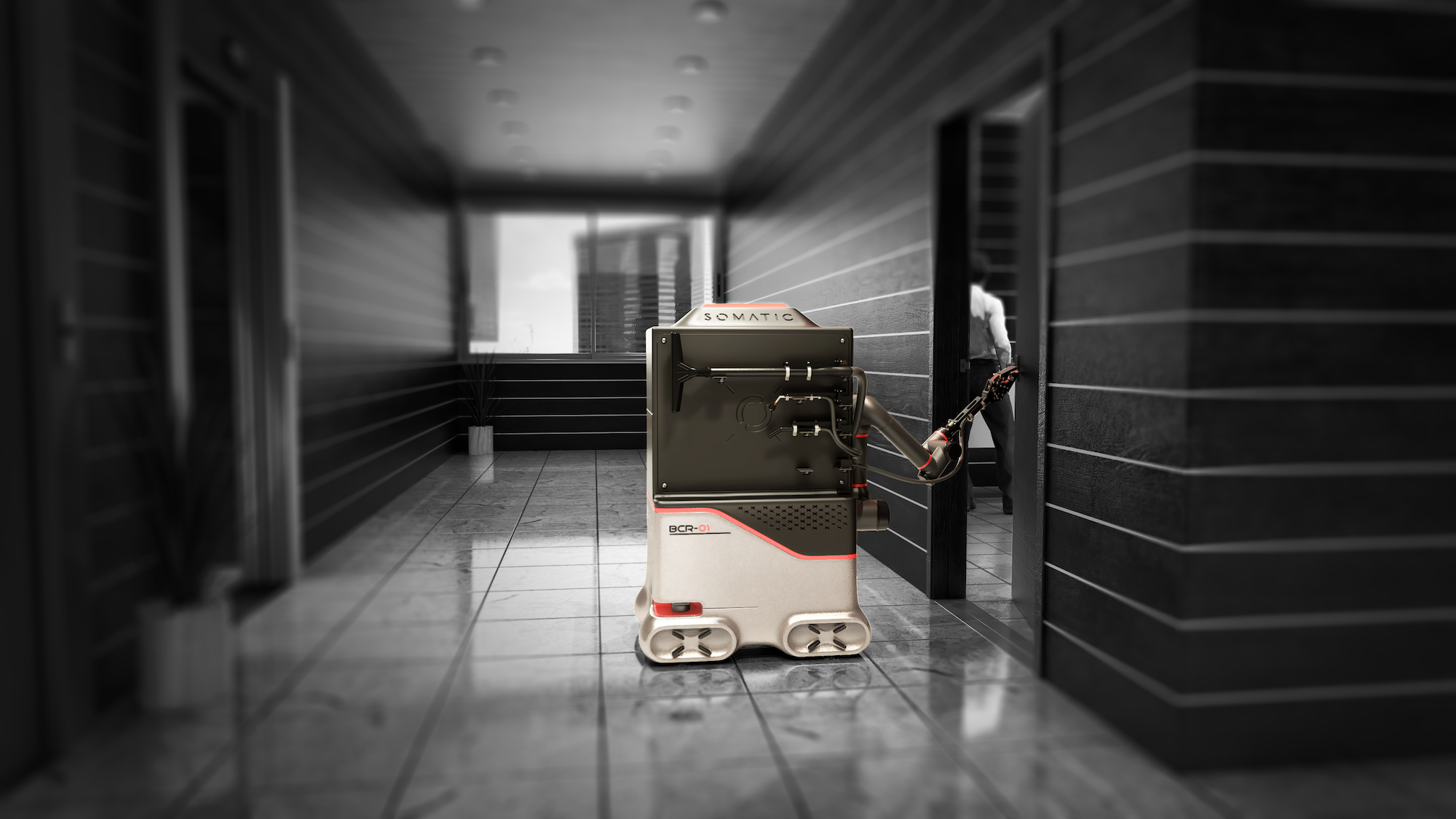

Despite long hours, physical demands, and often unhygienic working conditions, the average salary of a janitor in the United States is less than $34,000. Somatic, a robotic cleaning service for commercial buildings founded in 2020, offers a robot that can do the job for barely a third of that wage.
“We aim for customers to walk in and not be able to tell if a person or a robot cleaned the bathroom,” Somatic CEO Michael Levy tells PopSci.
In time-lapsed video footage recently highlighted by New Atlas and elsewhere, a Somatic bathroom bot can be seen roaming the halls of a medical facility, entering both single and multi-stall restrooms, as well as attending to tasks like spraying disinfectant and vacuuming the floor. According to Levy, “Less frequent tasks like restocking consumables (paper towels, toilet paper, and soap) and taking the trash out still require local staff input.”
[Related: The germiest places you might not be cleaning.]
But although Levy assures customers—and laborers—that its line of semi-autonomous machines first unveiled in 2020 are meant as an aid alongside sanitation workers, others aren’t so sure.
For Paris Marx, a longtime tech industry critic and host of the podcast, Tech Won’t Save Us, Somatic’s robots are another example of an engineering team believing they can understand and automate tasks when “they really have no idea what a janitor (in this case) really does.”
Marx notes the more pressing concerns in many automation drives are the scare tactics employed by managers, who often use the threat of new technologies to force workers into accepting lower wages, worse conditions, and consent to surveillance technologies on the job.

Meanwhile, those within the janitorial and service industries echoed their concern about the rise of automated products like those offered by Somatic.
“As we have seen during the WGA and SAG-AFTRA strikes this summer, every industry is experiencing technological changes that may impact workers’ lives,” a spokesperson for Service Employees International Union (SEIU) said. “Whether it’s actors, writers, or janitors, what is important is for employers to negotiate with workers through their unions how these technologies will be employed to ensure the best outcomes—for consumers, workers, their families, and our communities.”
[Related: Study shows the impact of automation on worker pay.]
According to Marx, the current onslaught of AI-powered and robotic labor products are reminiscent of tech companies’ and media’s job doomsday prophecies from the mid-2010s. “[T]he reality was that while robots were trialed in everything from elder care to food service, very few of them actually stuck around because they simply didn’t do the job as well as a human,” says Marx. “A decade later, we’re repeating a similar cycle with generative AI and robots like Somatic’s bathroom cleaning robot, but I don’t expect the outcome to be any different than last time.”
“When you watch their demonstration video, the robot is only going over clean bathrooms—it never shows us how it handles a real mess, says Marx, noting the robot appears slow, and doesn’t seem to provide a deep clean most people might expect for a public restroom.
According to Levy, each initial setup of their bathroom bots is done virtually from Somatic’s office. “We ‘play the worst video game ever,’” he says. “We clean the bathroom one time using software we built. That cleaning plan is then pushed to the robot via an [over the air] update.”
For Marx, however, there’s room for improvement. “I also didn’t see it touch the sinks,” they note.
